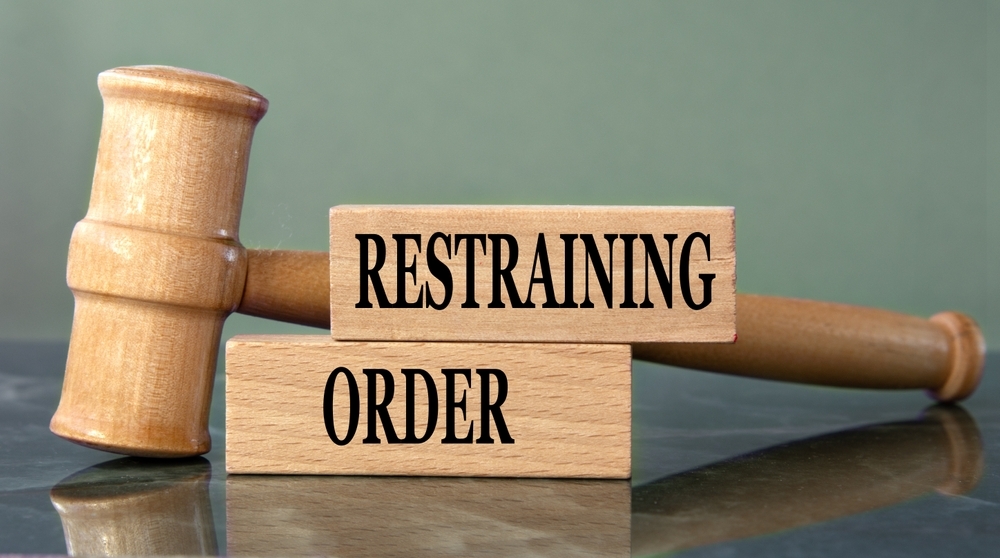
A restraining order can deeply affect your daily life, from limiting where you can go to restricting your ability to contact certain individuals. For Los Angeles residents, being served with a restraining order is a serious matter that demands immediate attention and careful navigation. Avoiding common mistakes and seeking the guidance of an experienced restraining order lawyer is crucial for safeguarding your rights and crafting a strong defense.
This guide explains the types of restraining orders in California, common pitfalls to avoid, and the steps you should take to handle a restraining order effectively.
Types of Restraining Orders in California
Restraining orders are court orders designed to protect individuals from harassment, abuse, threats, or violence. In California, restraining orders fall into four main categories, each with specific criteria and consequences.
Domestic Violence Restraining Orders
Issued to protect individuals from abuse by someone they share a close relationship with, such as a spouse, partner, or family member. Abuse can include physical harm, threats, or emotional manipulation.
Orders Addressing Harassment from Non-Close Relationships
Also known as civil harassment, these court orders are intended to address situations involving stalking, threats, or unwanted contact from individuals outside of close personal relationships, such as neighbors, roommates, or acquaintances. They provide legal measures to help maintain safety and establish clear boundaries between the parties involved.
Workplace Violence Restraining Orders
Filed by employers to protect their employees from violence, harassment, or threats at the workplace.
Elder or Dependent Adult Abuse Restraining Orders
Issued to protect elderly individuals or dependent adults from physical, emotional, or financial abuse.
Each type of restraining order carries unique implications, making it essential to understand the specific allegations against you and consult a restraining order defense lawyer immediately.
How Does a Restraining Order Differ From a No Contact Order?
While both restraining orders and no contact orders serve to protect individuals from harm or harassment, they differ in how they are issued and their legal contexts.
A restraining order is typically a civil order requested by an individual seeking protection. It can include various conditions, such as staying a specific distance away, avoiding certain locations, or refraining from contacting the protected person. Restraining orders require a formal petition and a hearing where both parties can present evidence. Once granted, they remain in effect for a specified duration or until modified by the court.
A no contact order, however, is generally issued in the context of a criminal case, often after an arrest for alleged domestic violence or similar charges. Unlike restraining orders, no contact orders are initiated by the court, not the protected individual, and strictly prohibit any form of communication with the alleged victim while the case is pending. Violations can result in immediate criminal penalties.
For Los Angeles residents, understanding these differences is crucial for navigating legal obligations. A restraining order lawyer can help clarify your rights and obligations under either type of order and develop a strategy to address your unique situation.
Common Mistakes to Avoid When Facing a Restraining Order
Failing to take a restraining order seriously or mismanaging your response can lead to severe consequences. Here are some common mistakes to avoid:
Mistake 1. Ignoring the Restraining Order
One of the biggest mistakes is failing to respond to the restraining order. Ignoring it won’t make it go away—in fact, it can result in default judgments against you and potential legal consequences.
Mistake 2. Violating the Order
Even unintentional violations, such as contacting the protected person through a mutual friend, can lead to criminal charges. Always review the terms carefully with your lawyer.
Mistake 3. Failing to Gather Evidence
Many individuals fail to collect evidence that could dispute the claims made in the restraining order, such as text messages, emails, or witness statements.
Mistake 4. Not Hiring a Lawyer
Attempting to navigate the legal system without professional guidance can lead to unfavorable outcomes. An experienced lawyer for restraining orders will help you build a solid defense and ensure your side of the story is heard.
Steps to Take When Facing a Restraining Order in California
Facing a restraining order can be overwhelming, but taking the right steps can significantly impact the outcome of your case.
Step 1. Understand the Allegations
Carefully review the restraining order to understand the specific allegations and restrictions. This includes any no-contact orders, distance requirements, or court hearing dates.
Step 2. Consult a Restraining Order Lawyer
Seek legal counsel immediately to discuss your case, assess the evidence, and develop a defense strategy. Your lawyer will guide you through the legal process and represent you in court.
Step 3. Gather Evidence
Collect any documentation or information that supports your case, such as:
- Text messages or emails disproving the allegations.
- Witness statements that can confirm your version of events.
- Surveillance footage or other records.
Step 4. Attend the Hearing
Never skip a court hearing. Your absence could result in a permanent restraining order being issued against you. Your lawyer will help you present evidence, question witnesses, and argue your case effectively.
Proving Your Side of the Story When Facing a Restraining Order in California
Defending against a restraining order involves disproving the allegations and showing that the claims lack merit. A skilled restraining order defense lawyer will work to uncover inconsistencies, biases, or lack of evidence in the petitioner’s case.
Defense Strategies
- Disproving Intent: Showing that your actions were misinterpreted or taken out of context.
- Proving False Allegations: Highlighting inconsistencies in the petitioner’s testimony or evidence.
- Demonstrating Lack of Evidence: Arguing that the petitioner has not provided sufficient proof to justify the restraining order.
Building a strong defense requires a thorough understanding of California’s restraining order laws and a proactive approach to gathering evidence.
Unique Example: Misinterpreted Communication
A Los Angeles resident is served with a restraining order after repeatedly texting their ex-partner about retrieving personal belongings. The petitioner claims the texts were harassing, but the respondent insists they were practical requests. By presenting the text history and showing the messages were respectful and focused on logistics, the respondent’s lawyer is able to defend against the restraining order.
Consequences of a Restraining Order
Restraining orders have serious legal and personal implications that can affect your daily life and future opportunities.
Legal Consequences
- Criminal Charges: Violating a restraining order is a misdemeanor in California, punishable by up to one year in jail for first offenses and fines.
- Firearm Restrictions: Restraining orders often include a prohibition on owning or possessing firearms.
- Employment Challenges: A restraining order can appear on background checks in certain fields such as the military and those that require security clearances. This could potentially affect your job prospects.
Personal Consequences
- Reputation Damage: Allegations of harassment or abuse can strain relationships and harm your reputation.
- Restricted Access: Restraining orders may limit your ability to see loved ones or visit certain locations.
Understanding these consequences underscores the importance of hiring an experienced restraining order defense lawyer to protect your rights.
California Restraining Order Laws in 2025
California law continues to evolve, with new regulations aimed at balancing protection for victims and fairness for respondents. Key updates for 2025 include:
- Digital Communication Evidence: Courts are placing greater emphasis on digital records, such as texts and emails, in restraining order cases.
- Expanded Protections: Certain restraining orders now cover online harassment and cyberstalking more comprehensively.
These changes highlight the value of hiring an attorney with legal knowledge and experience to navigate the complexities of restraining orders.
Why You Need a Restraining Order Lawyer
Facing a restraining order without legal representation can leave you at a significant disadvantage. A qualified lawyer will help you understand your rights, challenge false allegations, and minimize the impact on your life.
How a Lawyer Can Help
- Evaluate the Case: Assess the petitioner’s evidence and identify weaknesses.
- Prepare for Court: Build a compelling defense and handle all procedural requirements.
- Negotiate Alternatives: Work to resolve disputes through mediation or other non-punitive methods.
- Protect Your Reputation: Advocate for your rights while mitigating damage to your personal and professional life.
Don’t Face a Restraining Order Alone—Defend Your Rights with the Law Offices of Christopher Chaney in Los Angeles
If you’re facing a restraining order in Los Angeles, you need an experienced advocate on your side. At the Law Offices of Christopher Chaney, we’re experienced in restraining order defense, offering personalized attention and aggressive representation to protect your future.
Contact us today at 818-330-5198 to fight back and protect your rights. We serve clients in Los Angeles, Encino, Burbank and throughout California.
Disclaimer: This blog is intended for informational purposes only and does not establish an attorney-client relationship. It should not be considered as legal advice. For personalized legal assistance, please consult our team directly.





